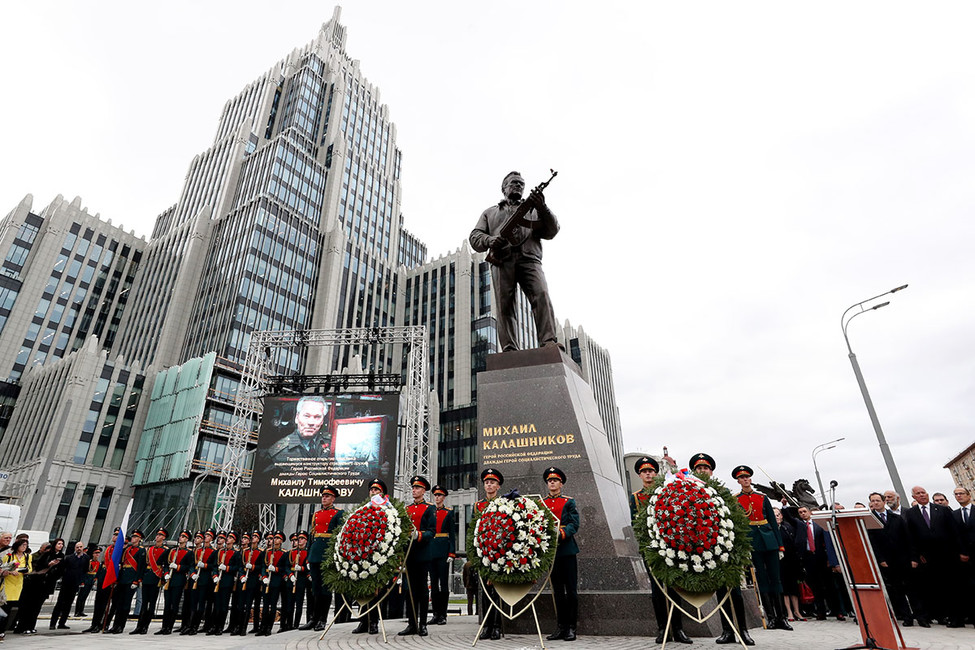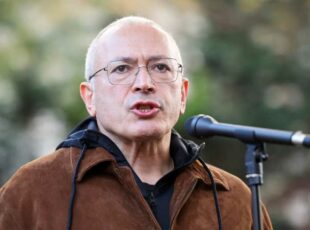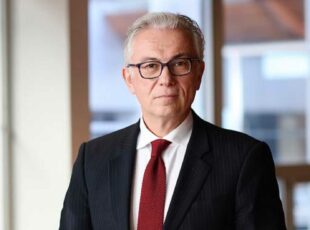Kalashnikov Rises Again in Moscow
Mikhail Kalashnikov, or at least his surname, is a household name throughout the world. He is best known for inventing the AK-47 assault rifle, which has found a utility in almost every country that has seen conflict for the last 60 years or more. The Moscow city authorities have recently decided to honour Kalashnikov with his very own, rather creepy, 30ft-high statue. But were the authorities right to honour one of the world’s biggest arms manufacturers?

Military officers and priests gathered in central Moscow today for the unveiling of the monument. According to Minister of Culture Vladimir Medinsky, the father of the world’s most famous automatic rifle is a “Russian cultural brand”. This statement has reignited the debate as to which monuments it is appropriate to build today in 2017, with many recalling the recent statue dedicated to Ivan the Terrible that was erected in the city of Oriel last year.
Mikhail Kalashnikov died in December 2013, but his legacy certainly lives on. Some estimates say that there are currently 100m Kalashnikov rifles currently in use around the world, making up 1/5 of all currently active firearms, and are supposedly responsible for around 250,000 deaths each year.
According to Afisha Daily, local residents have spoken out against the statue, claiming that Kalashnikov has no relevant relation to Moscow, and even less so to their particular inter-city district. One resident went a step further: Anti-war activist Andrey Kiselev decided to conduct a lone picket next to the statue in protest, holding a sign that said “a constructor of weapons is a constructor of death”. He was subsequently arrested by six police officers and taken down to the local Tverskaya police station.
The popularity of cultural figures in Russia has shifted in recent years. According to recent research, Soviet leader Joseph Stalin has secured the top spot in the hearts of the majority of Russians, who have defined him as an “outstanding” figure. Stalin is followed closely by president Vladimir Putin, who is now on par with Russia’s greatest poet: Alexander Pushkin. Meanwhile, Vladimir Lenin, the leader of the Russian Revolution, has slipped from 79% approval in 1989 to 32%.
The musician Andrey Makarevich has referred to the statue in condemning terms, calling it “mediocre and ugly”, he went on to say that “Okay. A Kalashnikov statue. Let’s have something to be proud of. If we count how many people have been killed by his weapons, the number is in the millions… Where did he defend the borders of our country? In Afghanistan, in Georgia, in Ukraine, in Africa?”
This is clearly a debate that is yet to be put to rest. As infamous and murderous tyrants such as Joseph Stalin climb in public approval ratings, the discussion as to which cultural and historical figures it is appropriate to exonerate in public will continue to take place. Which historical figures a country publicly celebrates can give clues as to what kind of society it aspires to become. Who the authorities will choose next is anybody’s guess.



